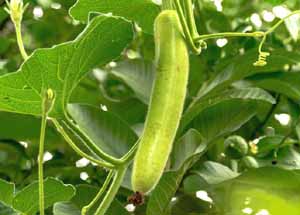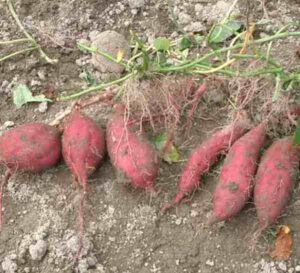Wheat farming faqs are some common questions people often ask, especially the beginners. If you are a beginner, you should read these wheat farming faqs. Reading these faqs will help you to enhance your knowledge.
Wheat Farming FAQs
People ask many questions about commercial wheat farming business.. Here we are listing most common questions about this profitable business, and trying to answer them. Hope you will find your answer. Don’t hesitate to ask us if you have more questions.
1. Is wheat farming profitable?
Yes, commercial production of wheat is a very profitable business. You can start this business for making money. Although, you should determine the market demand and value of your product before starting commercial production. Try to determine the price and demand in your local market first.
2. How to start wheat farming business?
Starting commercial production of wheat is relatively easy. You can start producing wheat without prior experience. First of all, select a good location for your production, prepare the soil, add necessary nutrients or fertilizer into the soil, plant seeds, water the soil and take good care of the plants.
3. Is wheat a profitable crop?
Is, wheat is a profitable crop. You can make good profits from this business.
4. How long does it take to grow wheat?
Generally, wheat takes about 4 months from planting to harvesting.

5. What is the best way to farm wheat?
Plough the soil well and add enough organic fertilizers during last ploughing. Throw wheat seeds in the furrows using a semi circular movement of your wrist or attach a grain drill to a tractor to plant the seeds. For a dry area, sprinkle a small quantity of seeds.
6. Is wheat easy to farm?
Yes, growing wheat is very easy. It’s just like rice farming. Actually, wheat production is much easier than most other fruits and vegetables.
7. Does wheat need a lot of water?
No, water requirements in wheat production is relatively less than many other crops.
8. How many times a year is wheat harvested?
Depends on your area. Wheat is grown or harvested every month of the year in the United States in 42 of the 50 states.
9. Does wheat come back every year?
Perennial wheat is generally a weak perennial since the current lines of the crop regrow only two times.
10. What happens to wheat if it is not harvested?
Delaying wheat harvest puts the crop at risk for increased disease, lodging, sprouting, and harvest loss.
11. What conditions does wheat need to grow?
What plants need fertile land and low soil temperatures (high soil temperatures can reduce establishment). The ideal temperature range for wheat germination is 12°–25°C, but germination will occur between 4° and 37°C.
12. Can you grow wheat anywhere?
Yes, you can grow wheat in almost anywhere in the United States.
13. Can what grow in poor soil?
Yes, they can grow in poor soil but production will be less. These plants can not thrive in acidic or poorly drained soils.
14. Does wheat need fertilizer?
Yes, wheat plants need fertilizer. Provide them with both organic and chemical fertilizers for better results.
15. Can wheat survive floods?
Wheat can probably handle 3-4 days of flooding or waterlogged conditions before it negatively impacts grain yield.
16. Who grows the most wheat?
China is the world’s largest wheat producer.
17. What type of soil is best for wheat?
Loamy soil rich in organic contents are considered best for wheat production.
18. What is the origin of wheat?
According to Wikipedia ‘the archaeological record suggests that wheat was first cultivated in the regions of the Fertile Crescent around 9600 BCE). Cultivation of wheat began to spread beyond the Fertile Crescent after about 8000 BCE.
Repeated cultivation and harvesting of the grains of wild grasses led to the creation of domestic strains, as mutant forms of wheat were preferentially chosen by farmers.
19. What are some other names of wheat?
Wheat is known by many other different names in many other different parts of the world. In India, wheat is known by many other different names in many different regional languages.
It is called Gehun in Hindi, Gom in Assamese and Bengali, Ghauhn in Gujarati, Godhi in Kannada, Godambu in Malayalam, Gahu in Marathi, Gahama in Oriya, Gehu or Kanak in Punjabi, Thiringu in Sinhala, Godhi in Tulu, Godhuma in Telugu and Govn in Konkani.
20. What is the nutrition value of wheat?
Wheat is nutritious and that’s why it is among the main staple foods. In a serving of 100 grams wheat, it provides 327 kilo-calories, and it is also a rich source of multiple essential nutrients (such as protein, dietary fiber, manganese, phosphorus and niacin).
21. What are some health benefits of wheat?
There are some benefits of consuming wheat. Here we are describing about the notable health benefits of consuming wheat.
- Wheat is an excellent source of carbohydrate and it is also a high source of protein.
- Wheat is a good source of fiber and it improves metabolism.
- Wheat is a very good source of manganese and magnesium.
- Wheat provide us with some amount of essential amino acids.
- Wheat is a great source of multiple nutrients when eaten as the whole grain.
These are the most common wheat farming faqs. Hope you are satisfied with the answers. Consider sharing with your friends. Good luck and may God bless you!







This blog is a great resource for beginners in wheat farming! Along with understanding the FAQs, it’s crucial to use high-quality fertilizers and pesticides for better wheat yield. For expert advice and premium agro-inputs tailored for wheat farming, visit Krishi Seva Kendra. Start your journey to profitable wheat farming today!